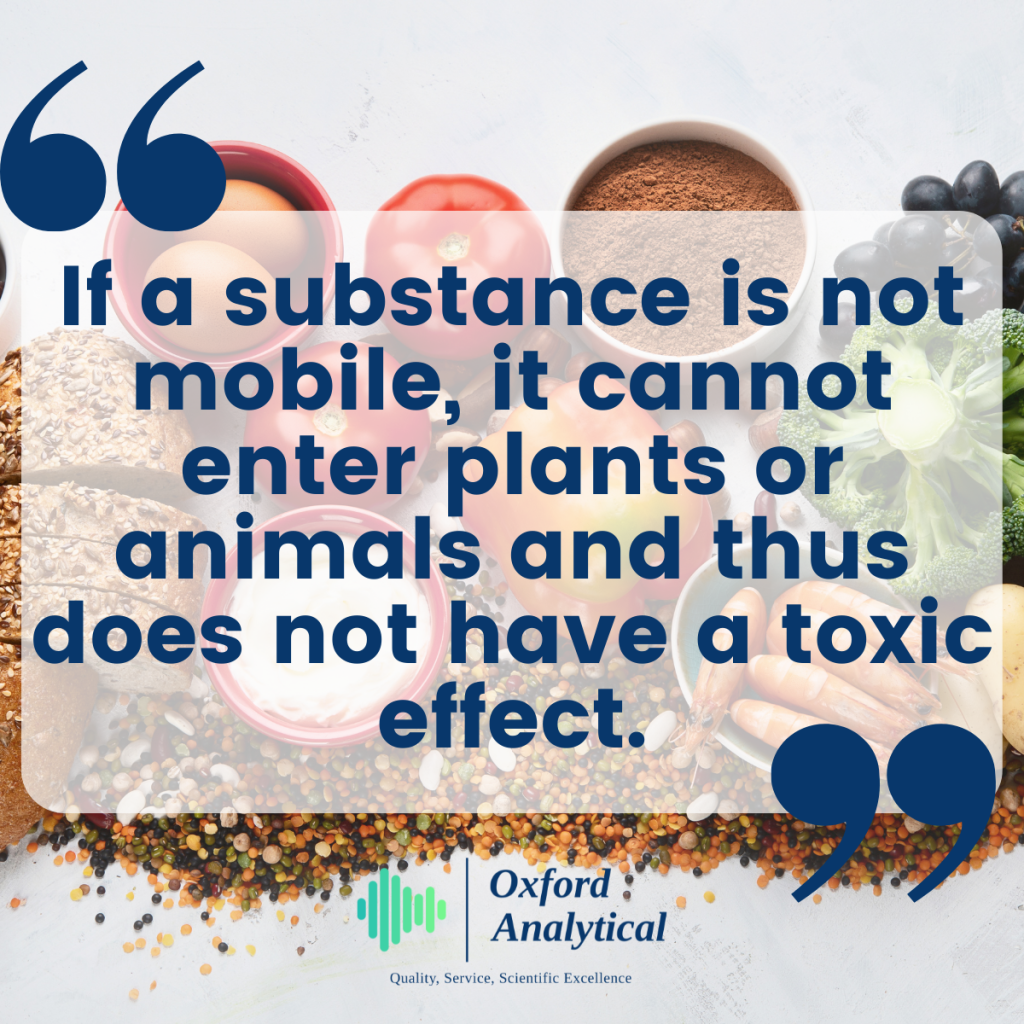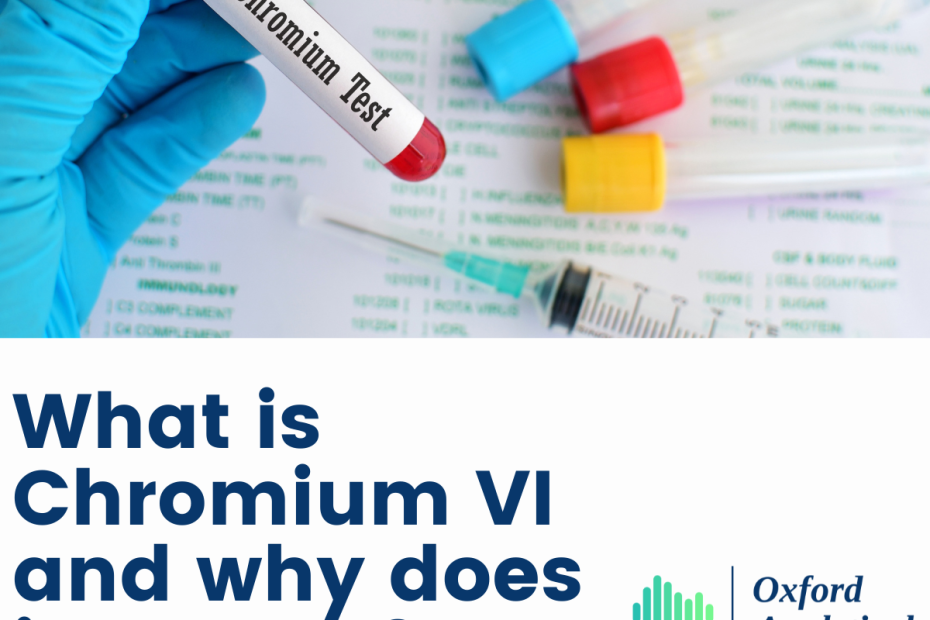Chromium VI or hexavalent Chromium is of significance in the newly released Fertiliser Regulations for the EU.
Elements in the environment can exist in different oxidation states – the main ones for Chromium are Cr[0] (metallic) Cr[III] (trivalent) and Cr[VI] (hexavalent) and are respectively known as chromite and chromate.
The trivalent and hexavalent chromium will be present in compounds and their oxidation state gives the total number of electrons which has been removed from it when it forms a chemical bond with another atom.
For instance, in Chromium Oxide (Cr2O3) Chromium is doubly bonded to one Oxygen atom and singly bonded to another Oxygen atom, which in turn in singly bonded to a Chromium atom and that Chromium atom is doubly bonded to the last oxygen atom! Linearly, it would look like O=Cr-O-Cr=O, where you can see that each Chromium atom has three bonds, and thus has an oxidation state of +3!
Chromium has an oxidation state of +6 in Chromium trioxide (CrO3) as each Chromium atom is doubly bonded to three Oxygen atoms, giving it six bonds total and the +6-oxidation state!
The reason oxidation states are important in toxicology is because they determine how soluble and therefore how mobile a substance is. If a substance is not mobile, it cannot enter plants or animals and thus does not have a toxic effect.
Chromium is a good example of this.
Is there anything you would like to see from Oxford Analytical?
What chemistry and regulatory challenges are you facing?


